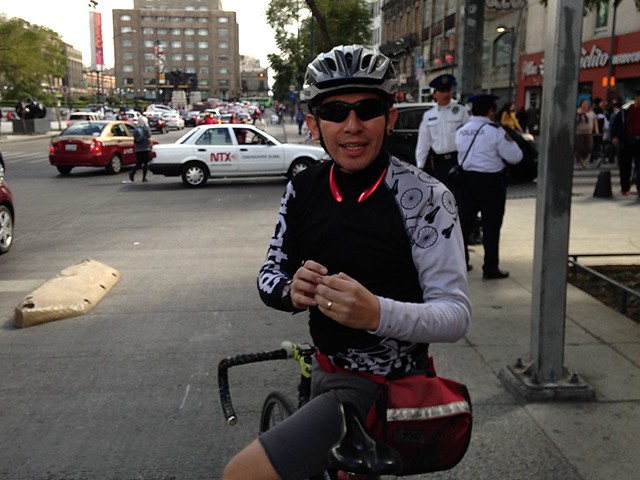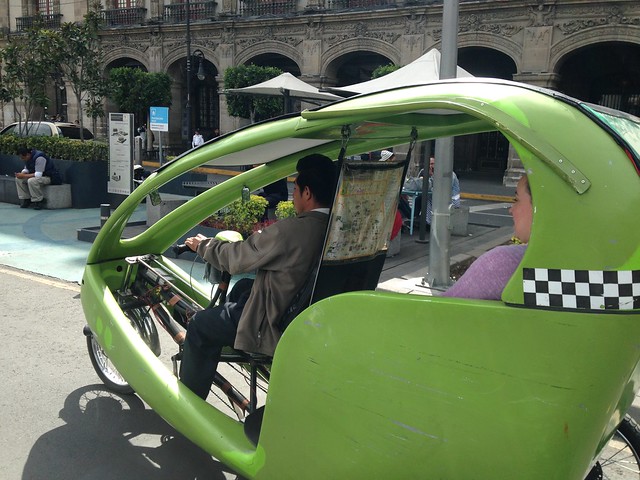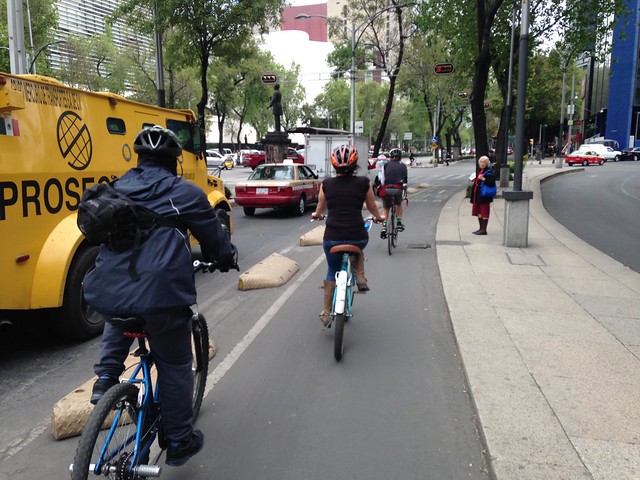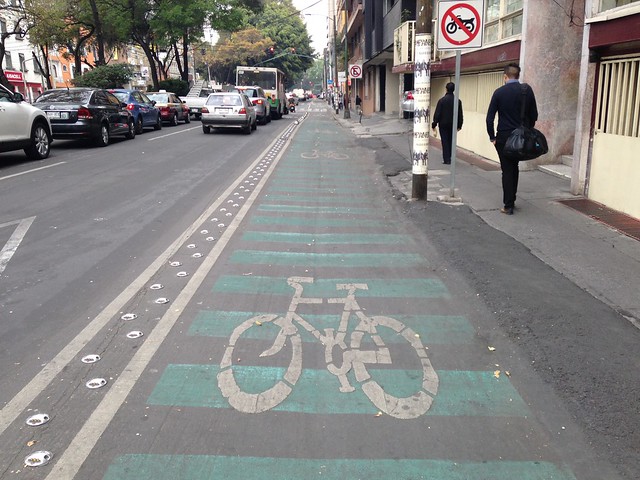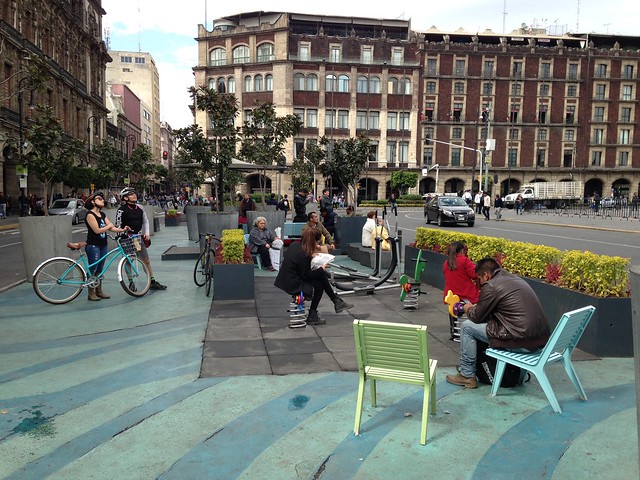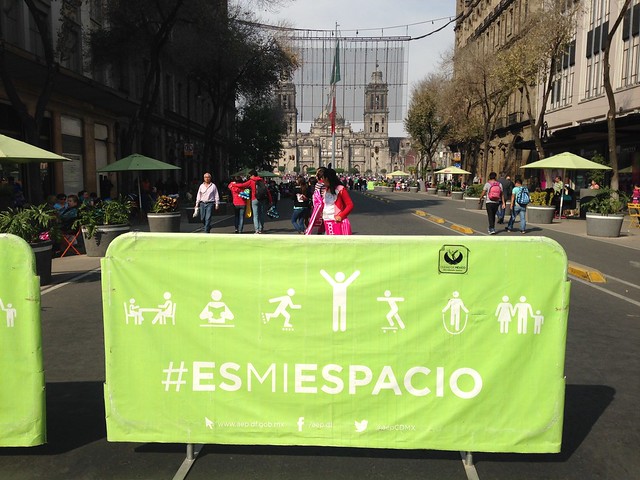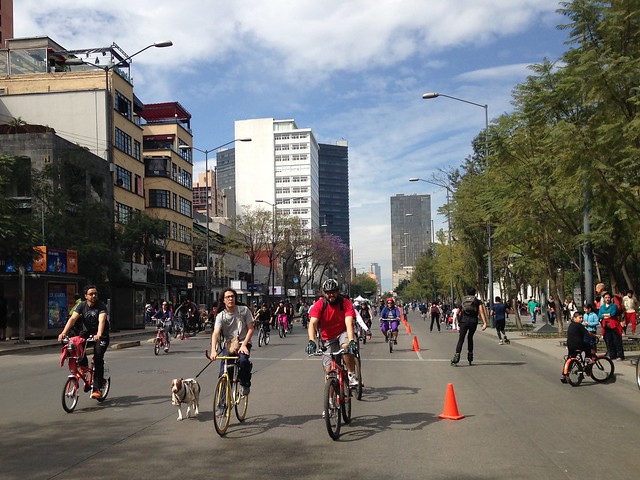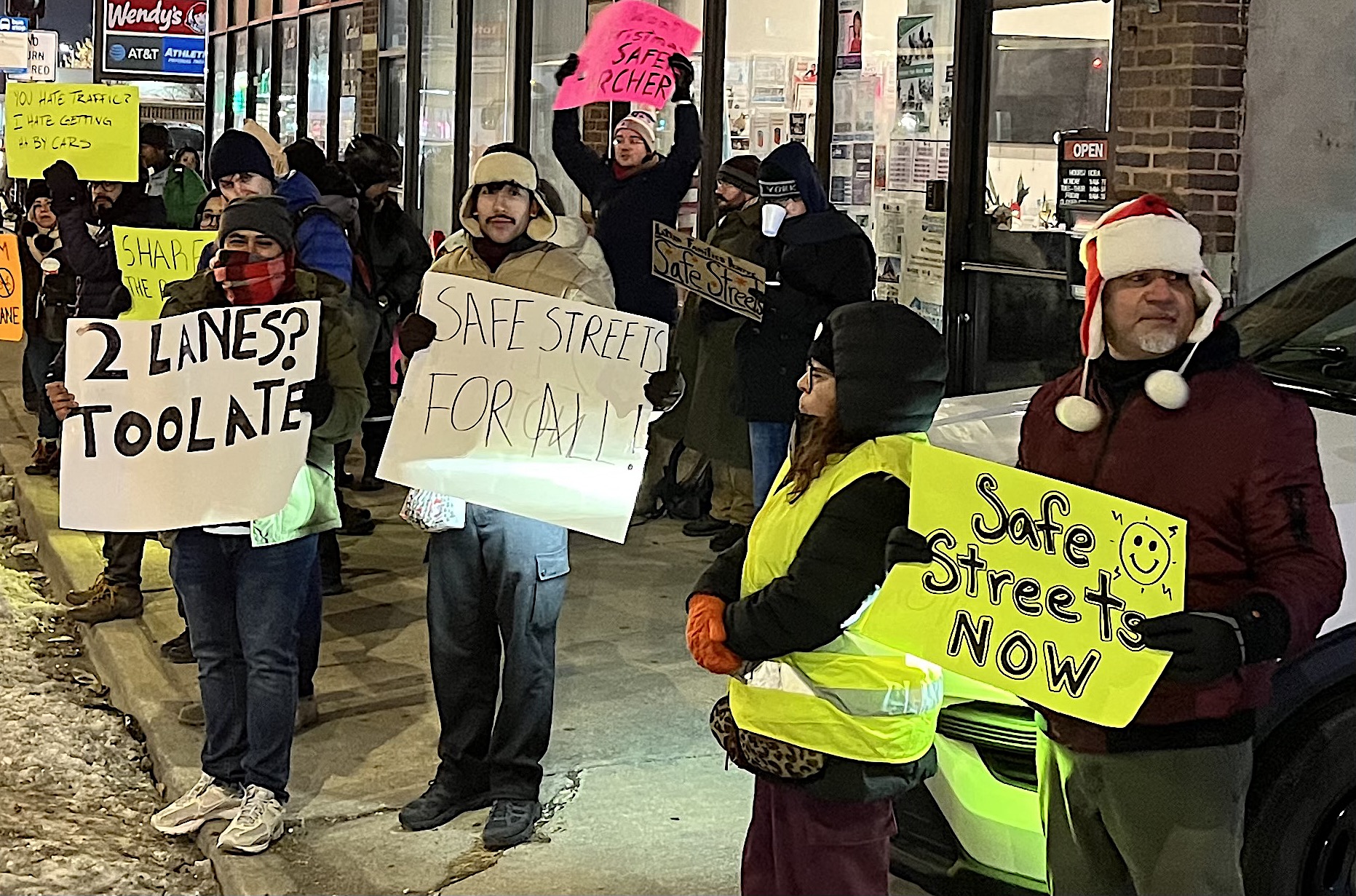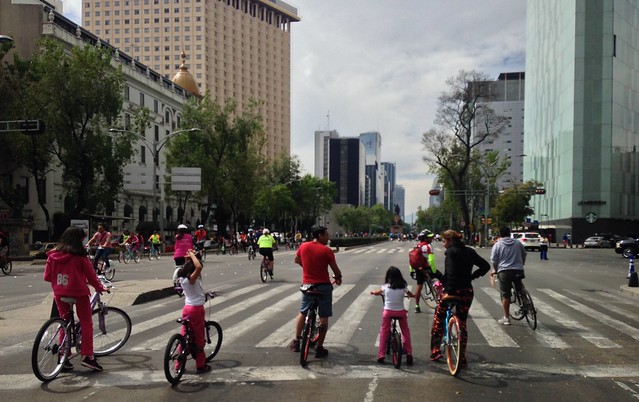
Despite Mexico City’s reputation as one of the most congested and polluted cities on earth, this metropolis of 21 million people has one of the best public transportation systems in the Western Hemisphere and many beautiful parks, plazas, and other public spaces. And in recent years, the Distrito Federal, or D.F., as Mexico City is called in Spanish, has taken steps to encourage bicycling and open up more street space to pedestrians as part of an effort to create a healthier, more livable city.
Last month I wrote about the D.F.’s fast, reliable Metrobús bus rapid transit system, which offers lessons for Chicago as we consider building a BRT line on Ashland Avenue. Now let’s take a look at some of the bicycling and public space initiatives I saw when I visited a few weeks ago. While Mexico City is still far from a paradise for biking, it already has some good-quality bicycle infrastructure and, more importantly, a booming bike culture.
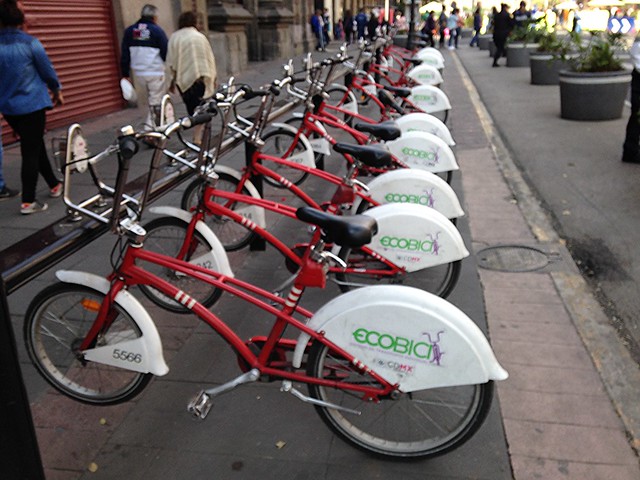
My guide to the D.F.’s bicycle scene was Pablo Pichardo from Bicitekas, one of the leading local advocacy groups. Pablo also works as a bike courier and dispatcher, and owns a rental and tour company called Poráy, a word he says is slang for “wherever.” Pablo generously provided us with bikes and took us on a ride from La Condessa, a neighborhood with leafy boulevards, a bit like Chicago’s Logan Square, to the Zócalo, the city’s central plaza, which is one of the largest public squares in the world.
Along the way, Pablo told me a bit about Bicitekas, which celebrated its 18th anniversary last September. The organization has several different functions. They lobby the city government for better conditions for cycling. They run community center Casa Bicitekas, which holds maintenance and repair classes. And Pablo and other Bicitekas members lead the Paseo Noctorno (“Night Ride”), a group ride that gathers at the victory column called El Ángel de La Independencia every Wednesday at 9 p.m., drawing more than 200 riders each week.
“It started with a few friends saying, ‘Let’s take a ride through the city at night,’” Pablo said. “It’s not a fast ride, but more of a friendly ride. The leaders will choose a destination, like Xochimilco [a district on the southeast side of town, famous for its ancient canals], which is 25 kilometers away. But we don’t tell people where we’re going, so that when we get there, people who are new to biking are surprised they were able to ride so far without a problem.”
Pablo said that ridership on the Paseo Noctorno has dropped since it peaked two years ago with 500 to 600 participants per event, but for a great reason. There are now more than 80 bike groups in the D.F., so there are five or six different group rides to choose from every day. On the last Thursday of every month, groups combine forces for the Paseo de Todos (“Everybody’s Ride”), with 3,000 to 4,000 people taking part.
Pablo led us downtown on Paseo de la Reforma, a broad boulevard with curb-protected bike lanes, which he said were first installed in Mexico City six or seven years ago. “It was easy to put a bike lane on Reforma, because it has so many lanes, nobody cared,” he explained. The short lengths of plastic curbing, bolted to the ground, keep cars out of the lane, but are easy for cyclists to move in and out of to get around any obstacles they encounter.
It’s a good design, one the city of Chicago should consider experimenting with in the future. The plastic curbs are a much better form of protection than the flexible plastic posts used for most Chicago protected lanes, and they look nicer too. And while they offer similar protection as our city’s newer concrete curb-protected lanes, they’re much cheaper and quicker to install, and it’s easy to move the curb sections if the design needs to be tweaked.
Other bike lanes we encountered on the ride didn’t have curbs, but rather metal domes on the left side of the bike lane with LEDs in them, known as “armadillos” in the U.S. While these offer less protection than curbs, they remind drivers to stay out of the bike lane. The Chicago Department of Transportation has tested these along a short stretch of the Milwaukee Avenue bike lanes in River North. It would be great to see these used in more locations where protected lanes aren’t an option.
While most of the Mexico City bike lanes Pablo showed us were high-quality ones, he said there are only a handful of good lanes in the city, although the city government is pushing to get more installed. As in Chicago, there are currently lots of gaps between the bike lanes that make the network less useful. For example, Pablo said, there are now a number of pedestrianized streets in the city center, but the Reforma bike lanes don’t yet connect with these car-free zones.
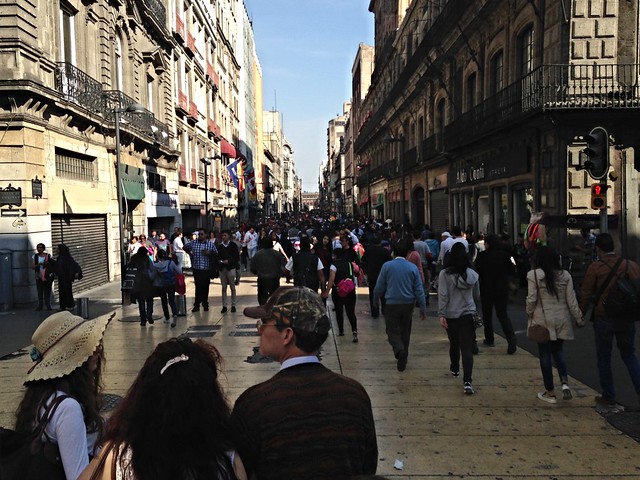
However, he emphasized that education and encouragement will be at least as important as infrastructure for getting more people on bikes in the D.F. “At Bicitekas, we believe that safety comes not just from bike lanes, but also education for bicyclists, pedestrians and drivers,” he said. “If you know how to move safely in the city, you are always in harmony with all the different parts.”
When we reach the Zócalo, Pablo shows us some of the improvements that have been made in recent years to make the surrounding streets more people-friendly. On one side of the plaza, street space has been repurposed to create an “oasis” with planters, seating, and playground and exercise equipment.
South of the Zócalo on Avenida 20 de Noviembre, the street has been reconfigured to make room for a curb-protected bike lane and café seating in the street’s curb lanes. At times, the entire street near the grand plaza is pedestrianized, a program called “Es Mi Espacio” (It’s My Space).
Speaking of forward-thinking city programs, on our last Sunday in town, we got to participate in a Ciclovía along Paseo de la Reforma. This kind of car-free streets event, which originated in Colombia, has become popular all over Latin America, as well as many U.S. cities, but it never really took hold in Chicago. While the Active Transportation Alliance made a heroic effort to put on “Open Streets” events for several years, due to lack of sufficient financial and organizational support from the city government, the program was discontinued in 2014.
Experiencing my first Ciclovía in a Latin American country really hammered home what we’re missing in Chicago. It was a joyful event, with people of all ages enjoying the safe street space on foot and bicycles, as well as a super-fun aerobics and dance area. We really need to bring the program back to Chicago.
Along with the D.F.’s extensive Metro system and the expanding bus rapid transit network, the growing bike network and creative use of public space shows that even a huge, car-dominated city can become safer, less polluted, and more livable if there is momentum for positive change. We should take that lesson to heart as we work to create more people-friendly Chicago streets.
